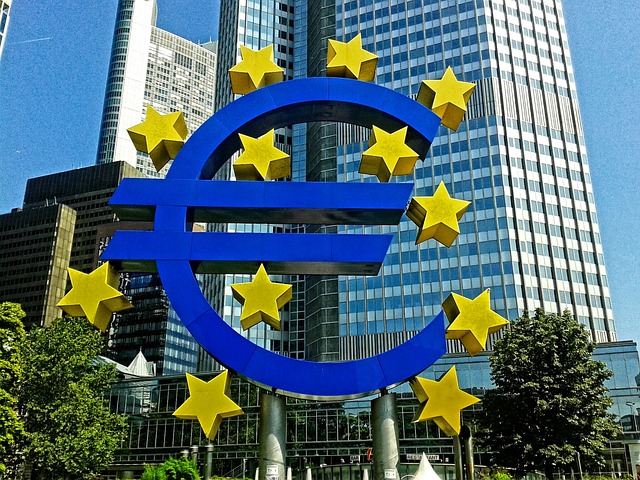December is turning out to be an interesting month in terms of central banks' monetary policy decisions. All eyes are on the much awaited European Central Bank meeting on Thursday, 3rd December which could possibly trigger a chain of events across other central banks. The ECB is widely expected to drive eurozone interest rates even further into negative territory when its policy-making committee meets Thursday.
A day later, on Friday 4th Dec, the U.S. jobs data for November is widely predicted to confirm the Federal Reserve's course to raise rates as soon as mid-December, the first increase in nine years. Developments in the U.S. and Europe this week are set to widen the gap between the likely path of interest rates in the two regions and add to currency-market turbulence. All the central banks are ready to test the limits.
"Aggressive ECB easing would counterweigh the sentiment effect of a US hike, as we don't expect the EUR/USD drop to be sufficient for Janet Yellen to re-postpone a hike. This leaves Norges Bank with a final mover advantage on relative rates and the currency, although domestic economic data will be the decisive factor for Governor Olsen", notes Danske Bank in a reasearch report.
All major central banks are expected to undershoot their inflation targets heading into 2016. Countries that have experienced a significant weakening of the currency with the likes of CAD, NZD, AUD and NOK are seen somewhat closer to reaching targets in the coming calendar year. For Bank of Japan, the Reserve Bank of New Zealand, the Federal Reserve, the Czech National Bank, the Riksbank and the Reserve Bank of Australia, the inflation-gap is even expected to turn positive in 2017. While Swiss inflation is expected to rise from deflationary territory in 2016 to marginally positive territory in 2017, the Swiss National Bank is still expected to be the central bank that undershoots its inflation target the most. It is also worth noting here, all major inflation gaps are expected to narrow in the coming 24 months with the exception of Norway.
The chart above shows the Fed, RBNZ, BoJ, CNB and the Riksbank could soon tighten monetary policy as all face both a negative unemployment gap and a positive inflation gap in 2017. BoE, BoC, the Hungarian (MNB) and Polish (NBP) central banks are all expected to face both a negative unemployment and inflation-gap. Norges Bank and the ECB, on the other hand, are expected to face monetary policy conditions in 2016 and 2017 that require accommodative policy.
Hopes of further easing by the European Central Bank at its meeting tomorrow keeps selling pressure on the single currency. Disappointing inflation figures in the region also adding the downside pressure. EUR/USD was trading at 1.0592 as of 1115 GMT.
ECB meeting could trigger a chain reaction across major central banks

Wednesday, December 2, 2015 11:26 AM UTC
Editor's Picks
- Market Data
Most Popular



 RBA Signals Possible Rate Implications as Inflation Proves More Persistent
RBA Signals Possible Rate Implications as Inflation Proves More Persistent  BOJ’s Kazuo Ueda Signals Potential Interest Rate Hike as Economic Outlook Improves
BOJ’s Kazuo Ueda Signals Potential Interest Rate Hike as Economic Outlook Improves  U.S. Productivity Growth Widens Lead Over Other Advanced Economies, Says Goldman Sachs
U.S. Productivity Growth Widens Lead Over Other Advanced Economies, Says Goldman Sachs  Gold’s Best Friend Is Back: Falling Yields Reload the $4,300 Bull Case
Gold’s Best Friend Is Back: Falling Yields Reload the $4,300 Bull Case  Singapore Maintains Steady Monetary Outlook as Positive Output Gap Persists into 2025
Singapore Maintains Steady Monetary Outlook as Positive Output Gap Persists into 2025  Japan’s Inflation Edges Higher in October as BOJ Faces Growing Pressure to Hike Rates
Japan’s Inflation Edges Higher in October as BOJ Faces Growing Pressure to Hike Rates  Ethereum Ignites: Fusaka Upgrade Unleashes 9× Scalability as ETH Holds Strong Above $3,100 – Bull Run Reloaded
Ethereum Ignites: Fusaka Upgrade Unleashes 9× Scalability as ETH Holds Strong Above $3,100 – Bull Run Reloaded  Brazil Central Bank Plans $2 Billion Dollar Auctions to Support FX Liquidity
Brazil Central Bank Plans $2 Billion Dollar Auctions to Support FX Liquidity  Fed Officials Split as Powell Weighs December Interest Rate Cut
Fed Officials Split as Powell Weighs December Interest Rate Cut 



























